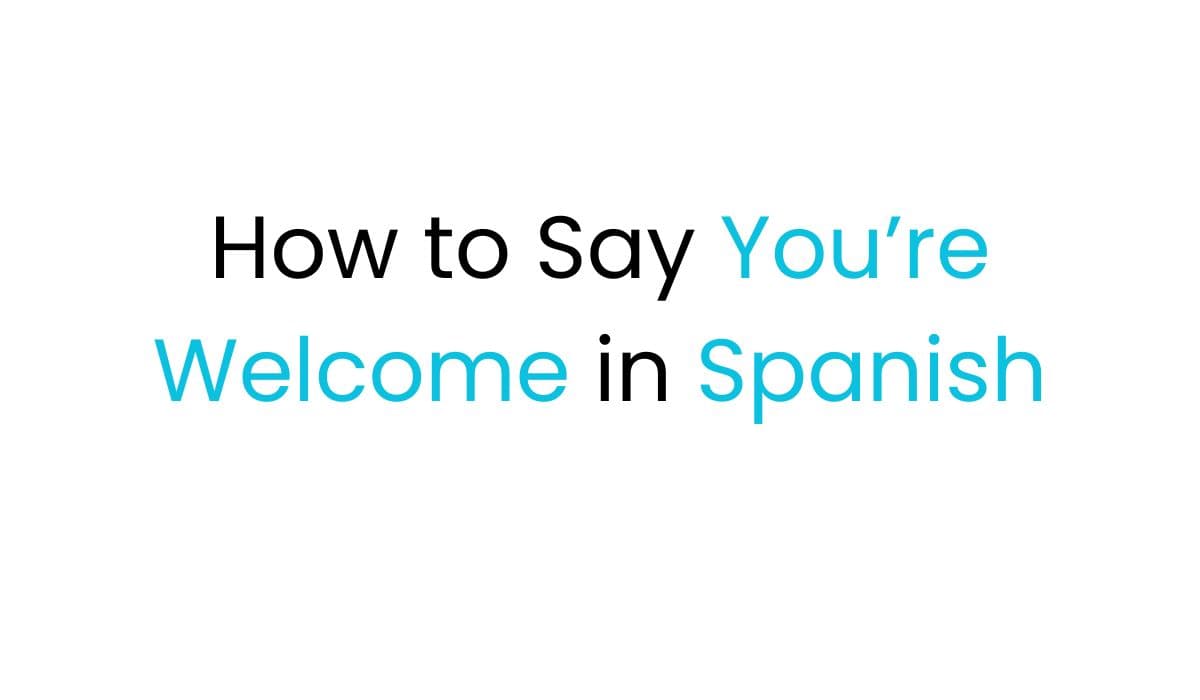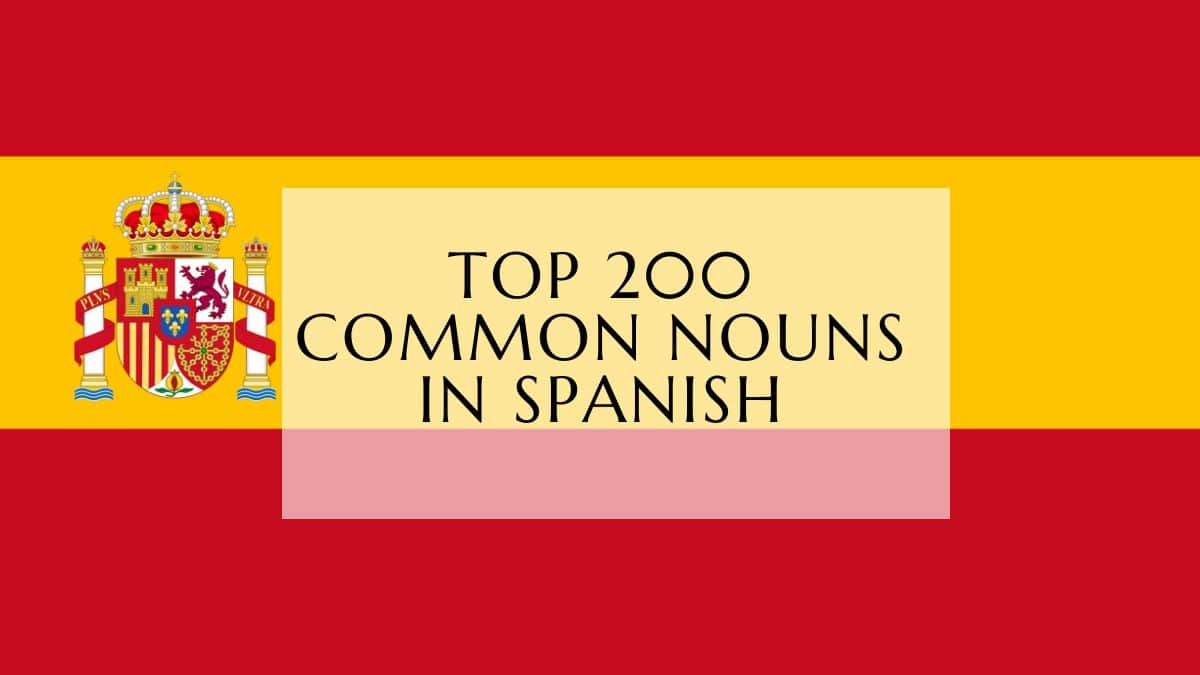Learning to be polite in Spanish is both fun and important. If you’re traveling in Madrid or learning Spanish, knowing how to say “you’re welcome” is key. This guide will cover the main phrases, cultural tips, and slight variations. These will help you show thanks and appreciation easily in Spanish-speaking places.

Mastering the Fundamentals: Common Ways to Say “You’re Welcome” in Spanish
Learning to say “you’re welcome” in Spanish is key. You’ll often hear de nada and no hay de qué. Each phrase has its own special meaning and time to use.
De nada: The Most Common Expression
De nada is what you say most often when someone thanks you. It means “it’s nothing” or “don’t mention it.” This casual phrase fits well in everyday chats, whether with friends or in casual work settings.
No hay de qué: A Polite Variation
For a more formal reply, no hay de qué is better than de nada. It means “there’s no need” or “it’s no problem.” This phrase is more formal and suits serious situations, like in business or with older people or those in charge.
Knowing de nada and no hay de qué is key to being polite in Spanish. These phrases help you show thanks and respect in different situations. They make you sound confident and polite when you speak.
You’re welcome in Spanish
When you learn Spanish, knowing how to say “you’re welcome” is key. The phrase you’re welcome is important in Spanish. It shows respect and politeness. It makes social interactions smoother.
De nada is the usual way to say “you’re welcome” in Spanish. It means “it’s nothing” and is used after someone says gracias (thank you). Saying de nada shows you’re happy to help and didn’t mind at all.
No hay de qué is another way to say “you’re welcome.” It means “there’s nothing to thank for” or “it’s nothing.” This phrase is a bit more formal than de nada. It’s good for professional or formal situations. Saying No hay de qué shows you’re being kind and polite, especially when talking to someone above you or in a business setting.
| Spanish Phrase | English Translation | Tone and Context |
| de nada | it’s nothing | Casual, common |
| no hay de qué | there’s nothing to thank for | Formal, polite |
Learning to say “you’re welcome” in Spanish is key to improving your language skills and understanding the culture. Knowing when and how to use these phrases makes your interactions more genuine and positive.
Regional Variations: Colloquial Expressions Across the Spanish-Speaking World
The Spanish language is known for its rich regional variations and colorful slang. Saying “you’re welcome” in Spanish shows this diversity, especially in Latin America. Let’s look at some common latin american slang terms for saying thanks and respuesta amable (polite response).
Latin American Slang Terms for “You’re Welcome”
In many Latin American places, the usual de nada (“you’re welcome”) is swapped for more informal and colloquial expressions. Here are a few examples:
- No hay problema (“No problem”) – A common response in Mexico, Central America, and the Caribbean.
- Con gusto (“With pleasure”) – Widely used in South America, especially in countries like Argentina and Chile.
- Pa’ servirle (“At your service”) – A regional variation popular in the Andean region, including Colombia and Peru.
- Claro (“Of course”) – A succinct and casual way to say “you’re welcome” in many Latin American countries.
These Latin American slang terms show the modales (manners) and informalidad (informality) of local cultures. They make the interaction more colloquial and friendly.
| Country | Colloquial Expression for “You’re Welcome” |
| Mexico | No hay problema |
| Argentina | Con gusto |
| Colombia | Pa’ servirle |
| Peru | Pa’ servirle |
| Caribbean | No hay problema |
“The diversity of regional variations and colloquial expressions in Spanish-speaking cultures adds richness and depth to the language. It reflects the unique modales and informalidad of each region.”
The Art of Tone: Formal vs. Informal Contexts
When you say “gracias” in Spanish, the tone you use changes how people see your thanks. Knowing when to use formal or informal language is key to good communication.
In formal situations, being polite is very important. You might say “de nada” or “no hay de qué.” These phrases show kindness and politeness, fitting the formal setting.
In casual settings, you can use phrases like “para qué” or “ni lo menciones.” These informal words help you connect with others on a friendly level.
Being able to switch between formal and informal tones when saying “you’re welcome” in Spanish shows you’re flexible with language. This flexibility shows you understand the situation and can make your conversations better.
Cultural Nuances: Understanding the Importance of Gratitude in Spanish-Speaking Cultures
In the Spanish-speaking world, gratitude (agradecimiento) is a big part of how people act and talk to each other. Saying “you’re welcome” (de nada or no hay de qué) is more than just polite. It shows the cultural nuances of appreciation (aprecio), kindness (bondad), and good manners (respuesta amable, modales).
Being thankful is key in Spanish-speaking cultures. When someone says thanks, you should respond with a real “you’re welcome.” This shows you value the appreciation (agradecimiento) for the kindness shown. This way, you’re showing respect and gratitude back.
- In many Latin American countries, saying “de nada” (it’s nothing) or “no hay de qué” (there’s no need to thank me) is polite when thanking someone.
- These responses show humility and modesty. They mean the kindness was just part of being friendly, not a big deal.
Knowing how to show gratitude (agradecimiento) and use “you’re welcome” right is key in Spanish-speaking cultures. It helps you make strong connections and show respect and good manners (modales). By getting these cultural nuances, you’ll see how important gratitude is in these warm and inviting societies.
Beyond Words: Body Language and Nonverbal Cues
When you say “you’re welcome” in Spanish, it’s not just the words that count. The way you say it can really change things. Body language and nonverbal cues are key to showing cortesía (politeness), amabilidad (kindness), and a real respuesta educada (polite response).
A simple “de nada” (“you’re welcome”) gets better with a warm smile, a nod, or a kind hand gesture. These buenos modales (good manners) show it’s not just a quick answer. They show real thanks and a warm welcome.
- A genuine smile makes you seem friendly and easy to talk to.
- Keeping eye contact shows you’re really listening and interested.
- A slight bow or nod of the head adds respect and deference.
- An open, welcoming hand gesture can make your words even stronger.
By using these body language and nonverbal cues, saying “you’re welcome” in Spanish becomes a full communication. It leaves a strong impression of cortesía and amabilidad.
| Nonverbal Cue | Effect |
| Smile | Shows warmth and makes you seem approachable |
| Eye Contact | Shows you’re really paying attention and engaged |
| Head Nod | Adds respect and deference |
| Open Hand Gesture | Strengthens the message of your words |
Adding these nonverbal elements to “you’re welcome” in Spanish makes your response more complete and powerful. It leaves a strong impression of courtesy and kindness.
Mastering the Subtle Art of Gracious Responses
Learning to respond graciously when someone thanks you is key in Spanish-speaking cultures. Saying “you’re welcome” and adding compliments can make the moment special. This way, you build strong relationships and show you care about others.
Combining “You’re Welcome” with Compliments
When someone thanks you, you can make it even better by adding a compliment. For example, you could say, “De nada, it was my pleasure to help someone as talented as you.” Or, “No hay de qué, I’m always happy to help someone as thoughtful as you.” This shows you value their kind words and highlights their good qualities.
You can also use phrases like “Me alegro de haber podido ayudarte” (I’m glad I could help you) or “Es un placer” (It’s a pleasure). These add to your kind and thoughtful nature. Getting good at these subtle ways to respond shows you’re skilled in Spanish and can handle social situations well.
Oualid Cheddadi is the founder of Lingualid, a platform that inspires independent language learners worldwide, regardless of the language they are learning. The name “Lingualid” is derived from the Portuguese word for “language,” “língua,” and the last three letters of Oualid’s name, “Lid.”



